

Table of contents
- Mixed culture is useful
- Good plant neighbors
- Bad neighbors
In the garden, the close togetherness of plants is unavoidable. But raspberries are choosy and are far from compatible with every plant. However, some neighbors turn out to be true benefactors.
Mixed culture is useful
Raspberry plants, botanically Rubus idaeus, spend their entire lifetime in one place. They leach out the soil on one side, making it increasingly easier for diseases and pests to spread. Practical experience with these berry plants has shown that they are similar to some other plants can form a beneficial mixed culture, which alleviates the aforementioned problems or not at all allows to arise.
What should be considered when choosing plants?
Raspberries should get neighbors that have different nutritional needs, otherwise they will become competitors. They are also shallow rooters, spreading their roots close to the surface, up to 1m around their base. Neighboring roots should not get in their way if possible. As a forest plant, the raspberry gets along well with other forest plants, but also with some types of vegetables and flowering plants. The best neighbors are listed alphabetically below.
Good plant neighbors
bush beans – (Phaseolus vulgaris var. nope)

Bush beans grow low so that the long raspberry canes can develop unhindered. From May they can be sown in free spots in the raspberry bed. Not only do they provide us with edible pods immediately, they also promote the health of the raspberries. When their lifespan ends in the fall, leave the roots in the ground. They are enriched with nitrogen, which replenishes soil storage as they decompose.
Peas – (Pisum sativum)

The same applies to peas as has already been said for French beans. However, be sure to select low-growing varieties of peas so they don't take away the light from the berry plants.
ferns – (Pteridophyta)
With their pretty fronds, these forest dwellers are also extremely decorative in the garden. But their real benefit for raspberries is more incidental and unnoticed: they drive away the dreaded raspberry beetle. Ferns are perennial and hardy, so they are suitable as long-term companions.
- find a partially shaded spot
- Plant about 50 cm from the raspberry
Garlic – (Allium sativum)
Flies, lice, beetles and mites fear garlic with its essential oils. Although it is shallow-rooted, it stays so close to the ground that it barely touches raspberry roots. It is also said to enhance the flavor of the berries.
lily of the valley – (Convallaria majalis)
As low-growing plants, lilies of the valley are ideal for underplanting raspberries. The long rods give them the desired shade while keeping the raspberry beetle and its harmful worms away.

A notice:
Lily of the valley is highly poisonous. They are therefore only suitable for a garden in which responsible handling of this poisonous plant is ensured at all times. If you have small children and pets, it is better to avoid it.
marigolds – (Calendula officinalis)
Anyone who has marigolds in the immediate vicinity does not have to fear mites, lice or any other parasites. Although marigolds bloom so plentifully and beautifully, they are modest consumers of nutrients.

Tip:
Marigolds not only set orange accents. Its flowers are popular in naturopathy because of their active ingredients. Some health benefits can also be easily made at home.
yarrow – (Achillea)
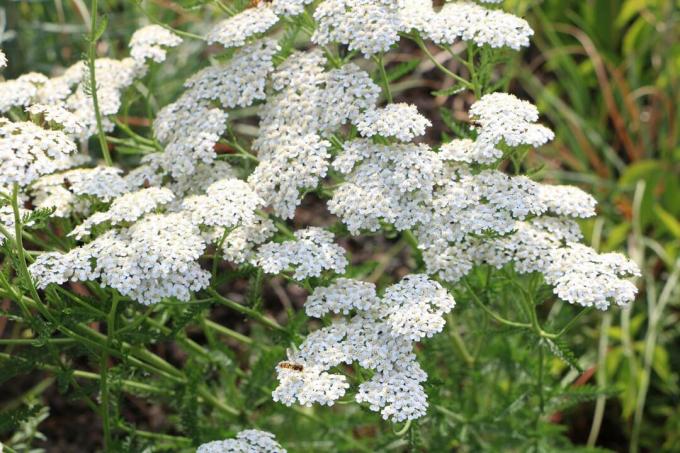
Yarrow supports the fertility of raspberries, flowers beautifully and is also edible. This weed is indestructible and can spread rapidly without our intervention. It may therefore be necessary to thin out every now and then.
violet – (Viola)
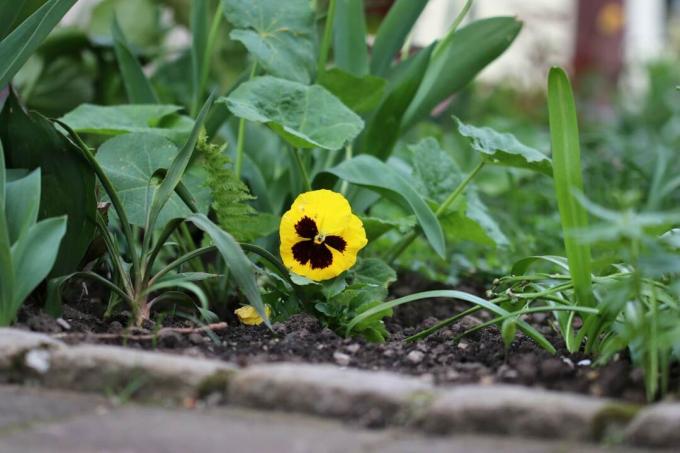
The wonderfully fragrant violets can accompany raspberries throughout their entire lifespan. Planted sporadically here and there at first, over time they weave a dense carpet. This prevents the soil from drying out too much. This has a beneficial effect on both the growth and fruiting of raspberries.
forget Me Not – (myosotis)
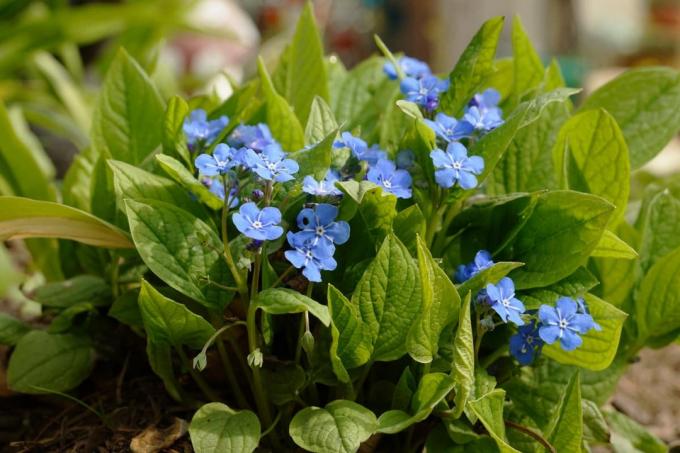
The small blue flowers are popular with romantics, but not with pests such as the dreaded raspberry beetle. The weakly consuming plant is suitable as a long-term companion. If you leave the faded flowers, she will self-seed and cover the ground around the berry plants in no time.
onions – (Allium cepa)

Onions effectively repel aphids that can threaten the fruiting of the berry plant. Although they are also heavy feeders, they look for their nutrients closer to the surface of the earth. However, they are only available as neighbors for one year and have to move to other beds for the next four years.
Bad neighbors
Unfortunately, some of the most commonly grown plants in the home garden have turned out to be bad neighbors for Raspberries proved because their presence prevents the spread of the dreaded Verticillium wilt favor.
Namely these are:
- eggplants
- strawberries
- potatoes
- paprika
- tomatoes
Tip:
The listed plants are not only unfavorable for a mixed culture. Also, avoid planting raspberry beds in spots where those bad neighbors were the year before.
 Home editorial office
Home editorial office
Learn more about soft fruit
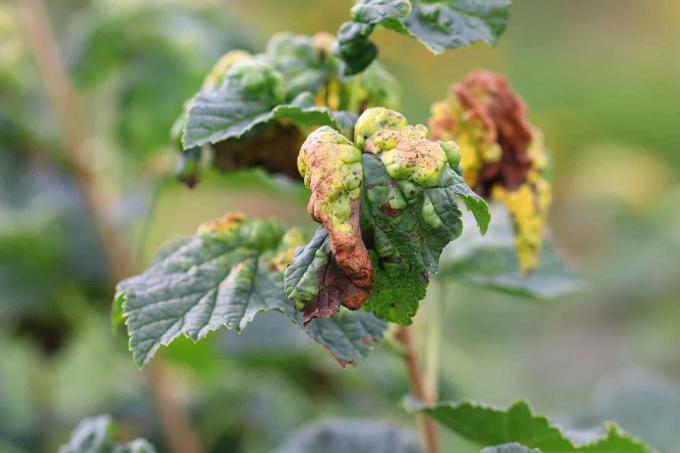
Leaf diseases on currants: leaf fall disease & Co
Diseases on the leaves are not uncommon in currants. They are triggered by fungi, viruses or various pests settle in. Many problems can be remedied with simple home remedies. Proper care also helps to prevent many diseases.

Honeyberry, Lonicera kamtschatica: 12 tips on location & care
In the local latitudes, the robust honeyberry can be cultivated and propagated well, as it does not make great demands on the site conditions and care measures. If you pay attention to certain factors when planting and cutting, you can already harvest sweet fruits in spring.

Cultivated blueberries: 4 important location criteria
The blueberry offers delicious fruits and is a visually appealing tree. However, the cultural form of the blueberry differs greatly from the demands on its location compared to its wild relatives. In the right location, cultivated blueberries can yield several kilos.
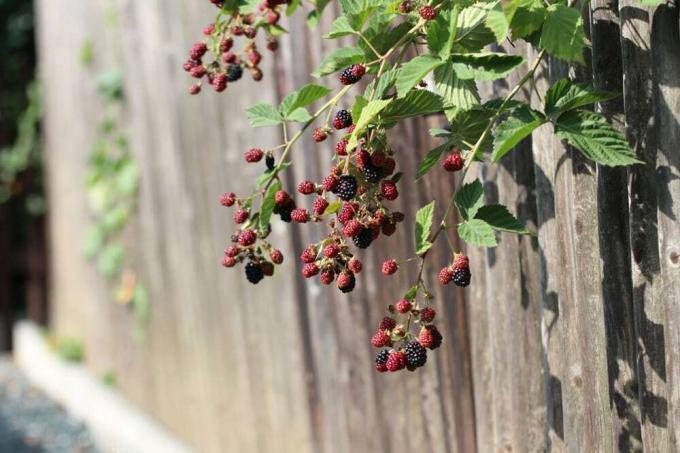
Blackberry location: 4 important criteria
Blackberries are a popular sweet fruit that is easy to care for. With a suitable location, plant health is guaranteed and the yield can be increased. The right location depends on the type of variety, because not every blackberry is insensitive to low temperatures.

Fighting lice on currants | 8 home remedies to get rid of aphids
When the first leaves appear on the currants in spring, there are often aphids on the bushes. The small insects are hidden under the leaves and can quickly cause a lot of damage. Therefore, lice should be combated at an early stage, ideally with natural home remedies.

Planting distance of strawberries, blackberries, raspberries & Co
Berries are the refreshing icing on the cake in the kitchen garden. With the right planting distance, you set the course for untroubled harvest pleasure in premium quality right from the planting stage. In this guide, you can read about the perfect planting distances in beds and balcony boxes for strawberries, blackberries, raspberries, etc.


